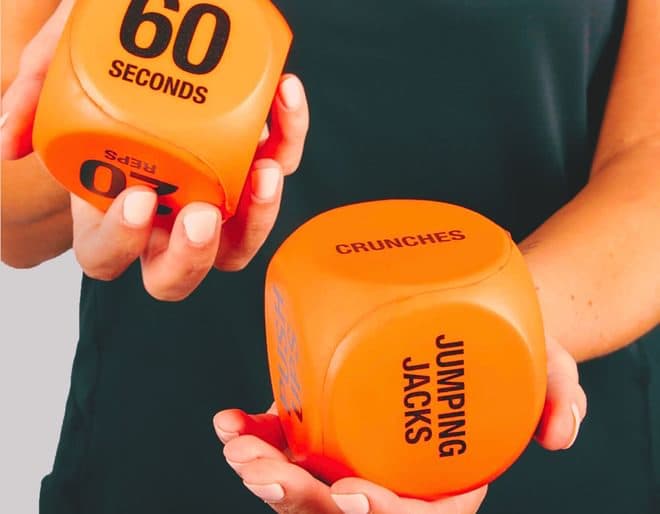There’s no denying that CrossFit already feels like a sport. Timed workouts, varied exercises, benchmark tests — all the elements are there. But even the best CrossFit programs can eventually start to feel repetitive.
That’s where casinos come in. Not in the way you might think — we’re not replacing burpees with blackjack — but in terms of how casino sites not on Gamstop keep people coming back: random rewards, anticipation, instant feedback, visual stimulation, and just enough unpredictability to keep the brain guessing.
Why Gamification Works: The Psychology Behind It
At their core, slot machines are engines of behavioural psychology. They’re designed to keep users engaged for as long as possible, using three key principles:
- Variable rewards – You never know what you’re going to get, and that unpredictability increases dopamine.
- Short feedback loops – You make a decision, and you get a result immediately.
- Progress tracking – Winnings, points, or credits are logged, giving a sense of accumulation.
In fitness, we often do the opposite: long-term goals, delayed feedback, and rigid routines. While consistency matters, many people struggle because the reward is too far away and the daily process lacks novelty.
That’s where the casino model offers a powerful twist: we can keep the structure of CrossFit but inject randomness and mini-goals to bring energy and excitement back into the process.
Step 1: Introduce Randomisation Without Losing Control
Slot machines aren’t truly random. They’re controlled systems that offer the illusion of randomness, within safe limits. The same approach works in fitness: give your body new inputs, but don’t abandon structure.
Create a Workout “Slot Reel”
Build three columns:
Column A: Movement Type
- Push (e.g., push-ups, handstand push-ups)
- Pull (e.g., pull-ups, ring rows)
- Squat (e.g., air squat, front squat, overhead squat)
- Hinge (e.g., kettlebell swing, deadlift)
- Core (e.g., toes-to-bar, sit-ups)
- Cardio (e.g., bike, run, row)
Column B: Equipment
- Barbell
- Dumbbell
- Kettlebell
- Sandbag
- Bodyweight
Column C: Time Format
- 21-15-9
- 5 Rounds for Time
- 10-min AMRAP
- EMOM x12
- Tabata
You can randomly select one item from each column before each session. The result might be:
- Pull-ups (movement)
- Bodyweight (equipment)
- 5 rounds for time (format)
That gives you the base structure for a WOD. Add one or two complementary movements, and you’ve got a full workout that’s different every time.
Step 2: Add Immediate Feedback Triggers
Part of what makes slots so engaging is the constant reaction cycle. Press, wait, react. We can mimic that in CrossFit by breaking workouts into mini-challenges and real-time rewards.
In-Practice Examples:
- If you finish a round of an AMRAP under a set time, you earn 30 seconds of rest.
- Complete a complex (e.g., 3 power cleans + 2 front squats + 1 push jerk) perfectly? You unlock a “power-up” — like skipping wall balls or reducing burpees.
- Hit a new PB? You get to choose the last finisher exercise.
This structure rewards attentiveness and performance in real time, not just at the end of a long cycle. It’s a small reward loop that feeds motivation.

Step 3: Create a “Credit” or Point System
Just like casino users accumulate chips, you can log training “credits” for effort, not just outcomes. This is especially helpful for athletes who may not PB every week but still show up and give full effort.
Sample Credit Table:
- Show up and complete the workout: +1 credit
- Complete a randomly generated workout: +2 credits
- Hit a new PB: +3 credits
- 7-day streak: +5 credits
- Help a partner or lead warm-up: +1 credit
These credits can be “spent” on:
- Choosing your next workout
- Swapping a movement
- Skipping a finisher
- Bringing a guest
- Ordering gym swag
You’ve now turned consistency into a reward system, just like building a chip stack in poker.
Step 4: Use a “Bonus Round” Concept
Slot machines often include bonus rounds that feel more exciting than the base game. Your workouts can do the same.
How It Works:
- If you complete the main workout under a certain time or within a given effort scale, you unlock a bonus movement.
- Bonus rounds can include high-skill drills, core finishers, or partner games.
- You can even gamify rest: “Spin the wheel” to determine if you rest 60, 90, or 120 seconds before the finisher.
This unexpected “extra” triggers excitement and makes the effort feel like it paid off in real time.
Step 5: Introduce Risk and Decision
Casino players often face this decision: cash out or double down? You can simulate this dynamic with option-based workouts.
Example:
- You can end the WOD after 4 rounds… or gamble on a 5th round for bonus credits.
- Choose between a longer WOD at moderate intensity or a shorter one at high pace — both give rewards, but the “riskier” one might earn more.
- After every completed movement, flip a coin. Heads = proceed. Tails = penalty reps.
This mechanic adds a mental edge to your session. It keeps your brain alert and mimics real-world pressure situations, much like competition environments.
Step 6: Gamify Conditioning with “Slot Intervals”
Sometimes, conditioning becomes repetitive: row, bike, run, repeat. Spice it up with slot-based intervals.
Setup:
Load three wheels:
- Machine (row, ski, bike, run)
- Duration (30 sec, 45 sec, 1 min, 400m)
- Recovery (20 sec, 1:1 ratio, none, EMOM-style)
Spin all three and repeat for 5–6 rounds. You can randomise per round, or build a sequence at the start.
Result? A varied cardio session that still targets your metabolic system but keeps your brain from checking out.
Step 7: Leaderboards + High Score Mentality
Leaderboards work, but not everyone likes public competition. Instead, take a personal high score approach.
Use a physical whiteboard or app to log:
- Most calories in 3 mins
- Fastest burpee ladder
- Heaviest unbroken complex
- Fastest single round
- Longest unbroken wall sit
You’re not trying to beat others — you’re beating your past self, just like beating your previous casino “win”. This encourages repeat effort and a sense of progression over time.
Step 8: Group-Based Slot Games
Everything above can be done solo, but it’s even more powerful in a group setting. Try:
- Team Slot Draw: Each athlete picks one movement blindly. Combine for the team WOD.
- Rotating Partner Roulette: Switch partners every 3 minutes and carry over their fatigue.
- “You Draw, They Do” Rule: You pick your partner’s next exercise. They do the same for you. Fun and strategic.
Not only does this build unpredictability, but it also fosters social energy and friendly pressure to show up and play full out.
Recovery: The Forgotten Gamified Zone
Don’t forget to rest. Even recovery can include gamification:
- Draw a mobility card from a stack
- Randomly select one area to foam roll
- Spin to determine sauna, walk, or light bike
- Use a random generator to choose a guided breathing drill
You don’t have to overthink it — you just have to build variety in what you don’t usually want to do.
Final Thoughts
CrossFit is already one of the most dynamic training methods available, but even the best methods benefit from novelty. Borrowing concepts from casino sites not on Gamstop, you can inject unpredictability, motivation, and psychological feedback into your training without changing your values or goals.
You already put in the work — now it’s time to play with your training, not just grind through it. Random workouts don’t mean random results — if they’re built right, they mean long-term consistency, higher engagement, and more reasons to show up.
So spin your workout wheel, log your credits, and go get your version of the jackpot — one WOD at a time.
